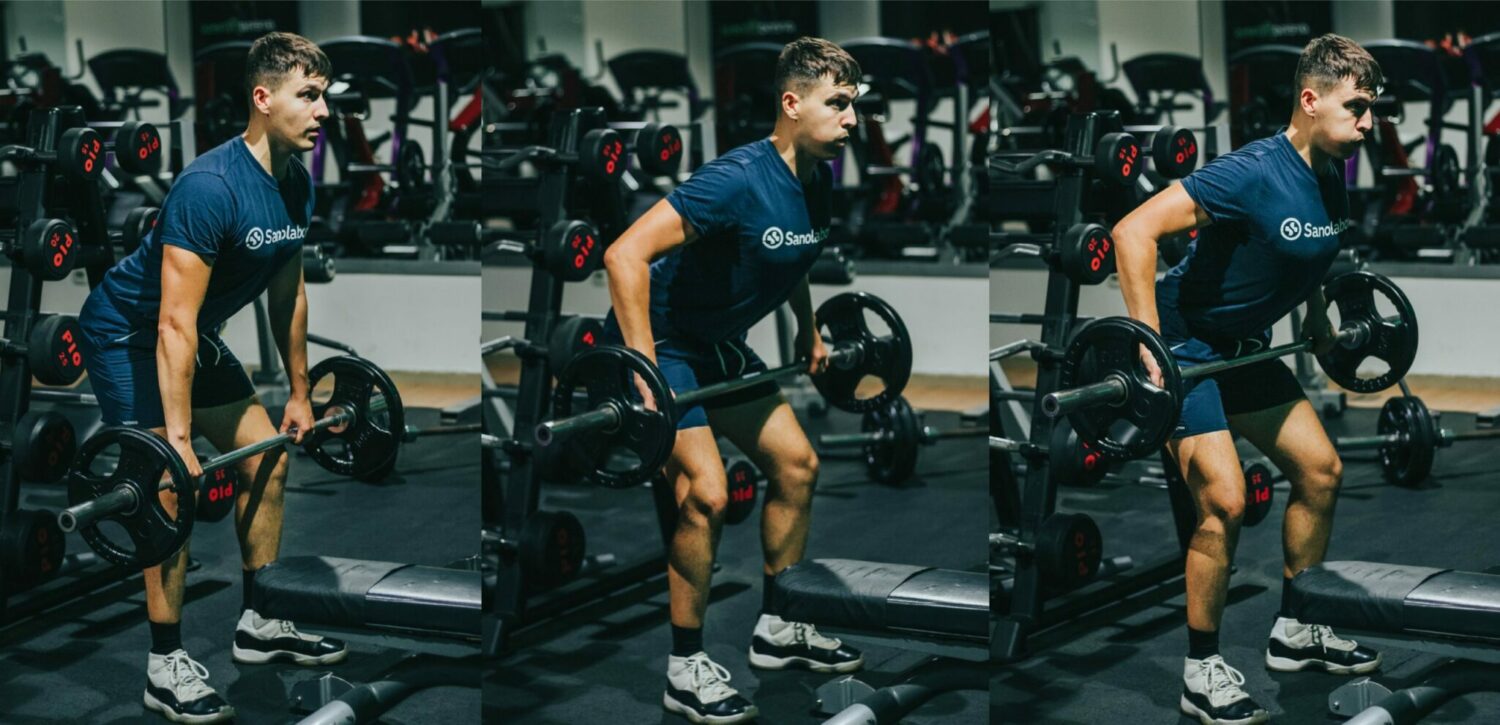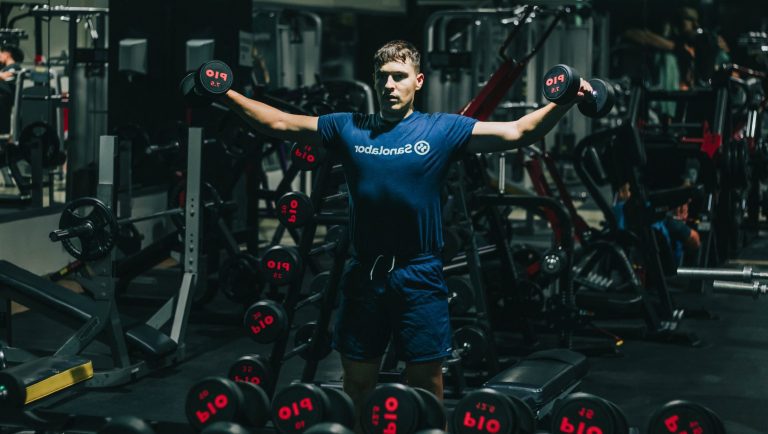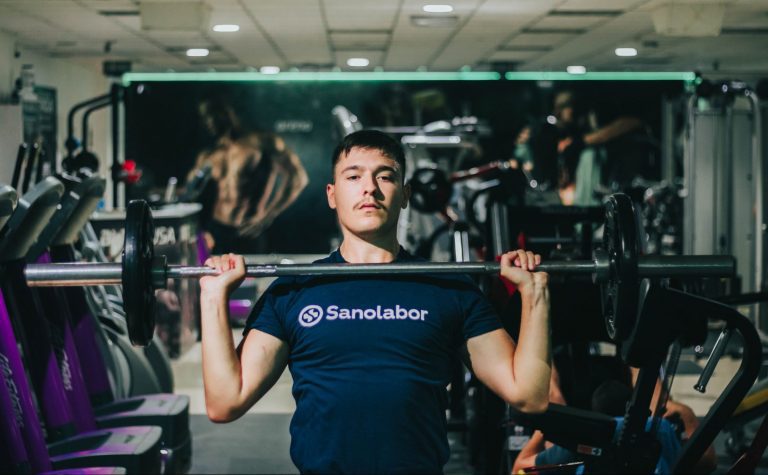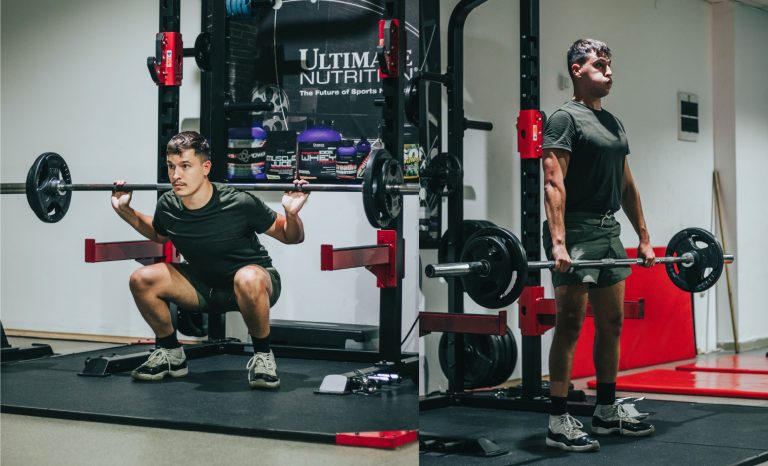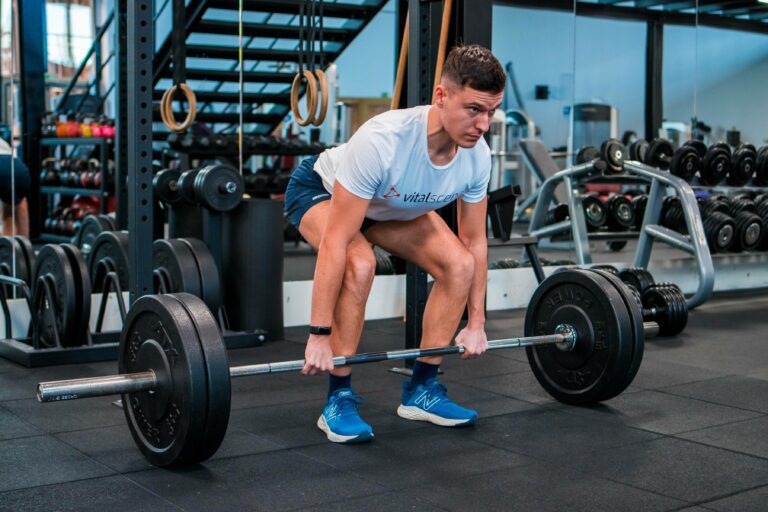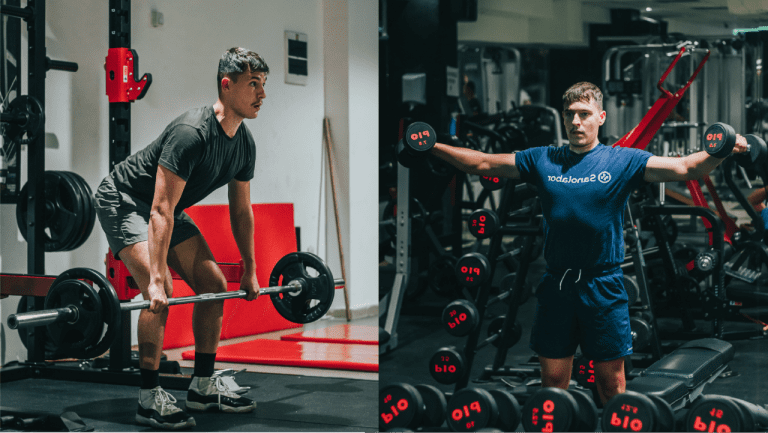4 Key Principles For Building Muscle: How To Train For Muscle Growth
Whether you are an experienced lifter or an amateur, first-time lifter this article will give you the best principles for building muscle, which can help you understand the mechanisms behind muscle growth. We cover the key factors of muscle growth, the key principles of effective muscle mass training, along with different training protocols, best exercises, and new techniques.
What is Hypertrophy?
The muscle either grows by hypertrophy or hyperplasia. Hyperplasia is increasing the number of muscle fibers you have, which has a lower impact on muscle growth than hypertrophy. Hypertrophy, on the other hand, is the growth of muscle cells, or muscle fibers in size.
Check out: How To Build Muscle | 8 Tips for Beginners
An article posted on The Muscle PHD shows that although it’s hard to measure in humans how much hyperplasia vs. hypertrophy contributes to muscle mass increase, hypertrophy is the main mechanism to focus on if we want to grow the muscle. (1) Hyperplasia may aid in muscle growth to around 5%, meaning hypertrophy focused training is a better approach.
Through lifting weights, we are stimulating both sarcomere hypertrophy and sarcoplasmic hypertrophy. The first one increases muscle density and the size of contractile proteins, while the latter increases muscle diameter.
Know thy Muscle
To learn how to build muscle, we need to understand how the muscle grows first, and structure our training accordingly. Muscles are tissues that have the ability to contract. In terms of hypertrophy, we are focusing on the skeletal muscles.
Muscle Functions
Any organ needs training, to function properly. If you start learning a new language, new connections are formed in the brain, thus increasing factors related to neuroplasticity. If you stop using the brain, it will shrink. So do skeletal muscles.
The main function of our muscles is to move our bodies, support our frame, and produce force against resistance. The more we use them, the more they’ll adapt and the higher force output we can exert later.
How the Muscle Grows
For optimal muscle growth, we need to push against external resistance. This causes our muscles to produce more force, through concentric and eccentric contractions. As we produce force, we generate movement and push against resistance.
Those contractions cause small injuries in the muscle fibers, also known as microtears. This disruption causes inflammation, which is the primary response that creates a sufficient environment for recovery and regeneration. After tearing those muscle fibers down, the body releases cytokines, and the immune system works its magic. (2)
After a few cycles of injury and repair, comes muscle growth. The muscles, with enough recovery, become bigger in size (hypertrophy) and motor neurons can fire up better (strength).
How does hypertrophy differ from strength training?
Hypertrophy training is the training optimized for muscle growth. It combines isolation exercises dominantly, with high volume and short rest periods of moderate loads weightlifting, with optimal regeneration protocol.
Strength training, in the mainstream media, refers to any strength-related work, which can also include bodyweight training methods that will aid in stability, balance and muscle density.
Training for strength on the other hand, is optimized training protocol made to improve pure strength, which is our maximal force output in a given exercise. It combines heavy weightlifting, longer rest periods, lower volume and compound exercises.
What happens to my muscles during hypertrophy vs. strength training?
During hypertrophy training the goal is to tear the muscle down, easily done by lifting with high volume and moderate load. The eccentric part is more important in hypertrophy training, as that’s where we can cause most microtears which will later on, result in hypertrophy.
In strength training, we aim to teach the nervous system to activate large motor neurons, large, white and fast twitch muscle and exert the maximal force output. The muscles aren’t as injured nor inflamed, as they are in hypertrophy, but the nervous system is tired from firing.
Which one should i train first, strength or hypertrophy?
Hypertrophy always comes first. The reason why is, hypertrophy partially destroys the muscle by ripping muscle fibers, causing microtears in them. This acutely increases inflammation and stimulates muscle growth. After muscle growth, strength comes second. Strength teaches this freshly-built muscles to actually perform and exert more force, which is much more efficient after they’ve grown. For experienced lifters however, cycles of hypertrophy then strength-focused training work best.
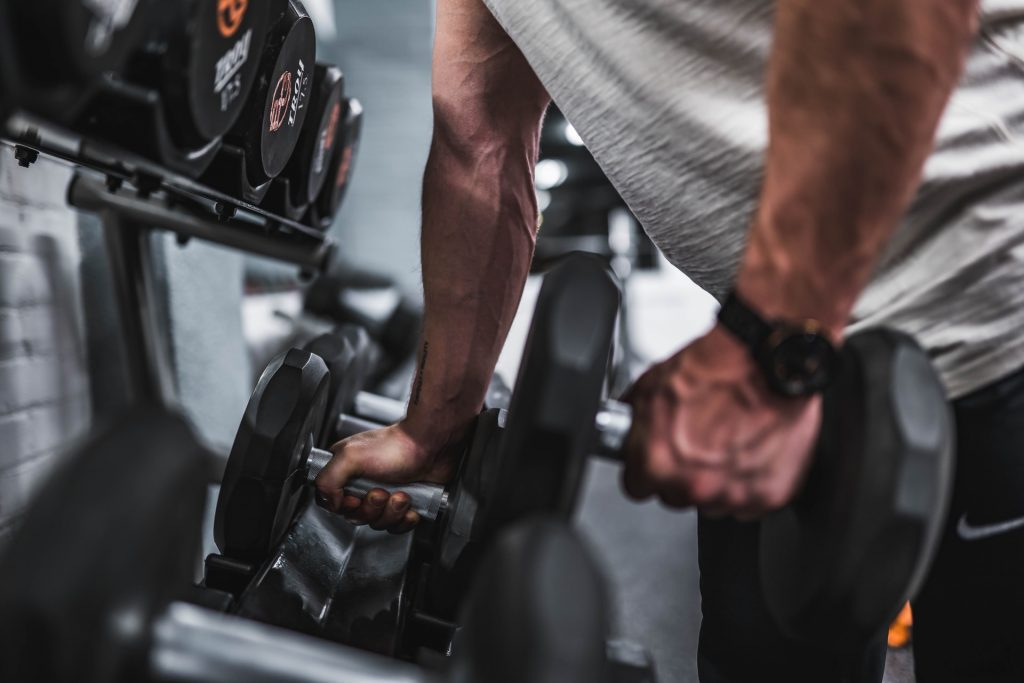
3 Key Factors Affecting Muscle Growth
1. Mechanical Tension
To maximize muscle growth, we need to focus on two major factors. Resistance training offers the right amount of mechanical tension and metabolic stress, research shows. (3)
Mechanical tension is by far one of the most important factors for growth, actually the dominant focus of hypertrophy training. It is the tension created when the muscle contracts against a heavy load, both in the eccentric and concentric phases.
This is why hypertrophy training is done in a full range of motion, with a slow and controlled tempo of 2/3 concentric to eccentric contraction. Mechanical tension is actually greater in the eccentric phase, where most of the micro-tears are caused.
2. Metabolic Stress
Metabolic stress is the second key factor stimulating muscle growth. Training for strength is done with faster-paced contractions with compound lifting and doesn’t have that big metabolic effect on the muscle.
This is why Hypertrophy Methods emphasize slow and controlled contractions with higher volume. This means lighter loads (than power/strength) and more repetitions, sets, and less rest. You might ask why? Because the point is to damage the muscle, to cause more micro-tears.
Metabolic stress feels like lactic acid building up in the muscle. It feels like a burning sensation and is associated with the blood pooling effect which causes intramuscular swelling. This inflammation is what signals and increases the secretion of growth-related hormones like Testosterone, HGH, Insulin, and IGF-1. (4)
3. Protein Synthesis
For muscle building to occur, we need positive protein balance. Muscles are made up of amino acids, and use them to function. More amino acids build up one complex protein molecule, and the more muscle we have, the higher the level of protein and water in our bodies.
When we are training, we are tearing the muscle tissue down, which results in protein breakdown. Then when we sleep, eat protein, and rest, we enter the anabolic phase where the protein synthesis is higher.
To efficiently build muscle we’ll need a consistent positive protein turnover, so higher synthesis and lower breakdown. This is why recovery, a diet high in protein, and sleep are important.
Research shows that protein synthesis can be controlled with the type of protein consumed, its bioavailability, protein timing, and protein amount. (5)
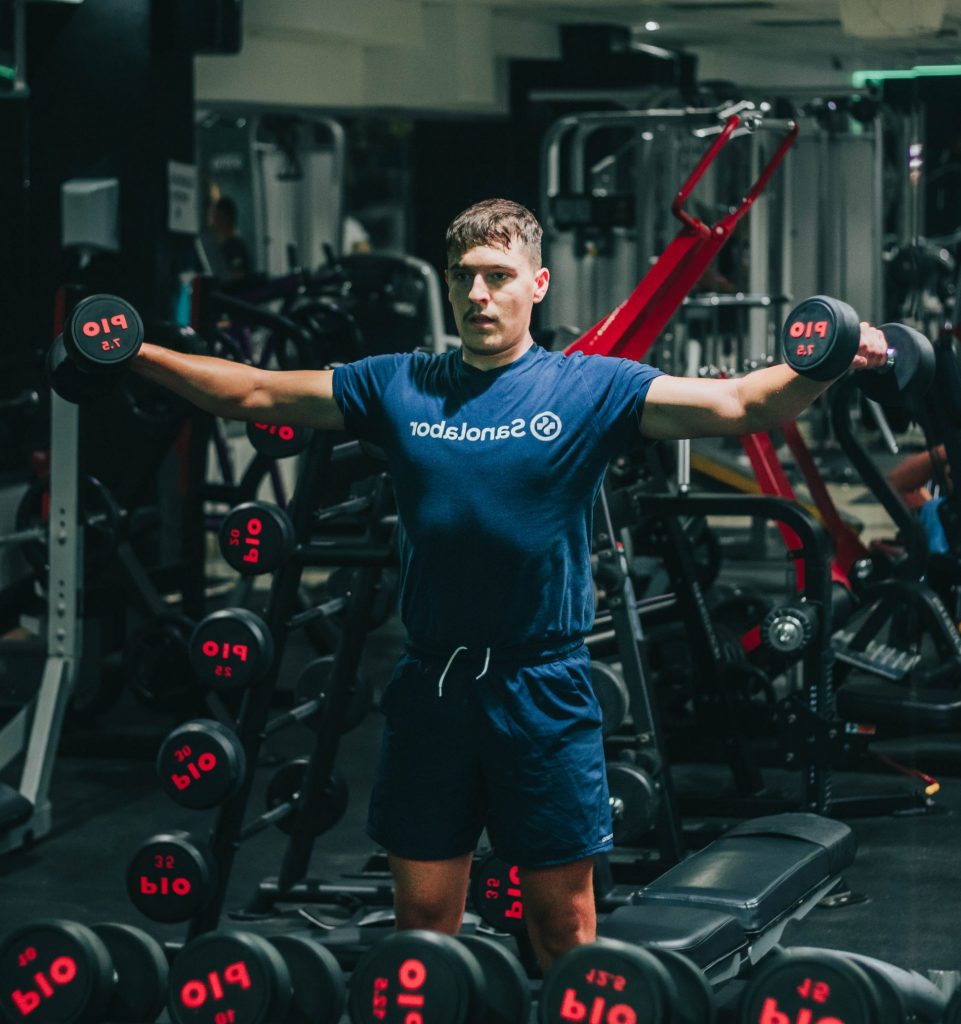
Hypertrophy Training Metrics
There are three main characteristics of hypertrophy training. To build muscle more efficiently, we need a high volume, frequent training, (more reps and sets) and shorter rest periods in between.
Volume & Frequency
Load (Weight)
Rest Period
For optimal hypertrophy, the key element is volume. To really grow in muscle size, we need to train almost every day. It is recommended that for muscle growth we should aim at six workouts per week, with one full day of recovery.
Of course, it matters how far we are along. For amateurs, 3 days of training per week can be great to start out the process, especially if you haven’t trained for years. But as we progress, to further grow in size, volume matters. 6 trainings per week, 5-12 exercises per workout, 3-5 sets, 8-12 reps per exercise would be ideal.
When lifting for size, we aim at 65-85% of our Rep Max. This means if we can bench press 100kg as the maximum load for 1 repetition, we aim at 65-85kg and repeat 8-12 reps for 3-5 sets.
This load is optimal to fatigue the muscle, through both concentric and eccentric contractions. This weight allows us to perform repetitions with conscious engagement of the specific muscle, in a slow and controlled manner. Anything less than 50% RM will target muscle endurance or power (if done plyometric or ballistic) and anything over 85% RM will target strength and activate the nervous system more.
A 2019 “Systematic Review of Advanced Resistance Training Techniques and Methods” has shown that keeping the reps at 6-12, with loads of around 60-80% RM and shorter rest periods (60 sec.) can produce the most efficient muscle growth. (6)
Rest should be kept at 60-90 seconds between sets, at such high volume, to further fatigue the muscle. The point is to feel the burning sensation of lactic acid building up, which causes the biggest growth response.
Hypertrophy Training Routines
There are different ways to schedule your workout plans, to ensure you can pack enough volume to stimulate growth. We’ll look at the most common workout routines.
Full Body
Split Muscle
Individual Muscle
Blood Flow Restriction
Superset Training
Training to Failure
- The full-body training protocol incorporates most of the main muscles in all training sessions. For example, such training would include the bench press, pull-ups, deadlift, squats, bent-over row, and a couple of abdominal exercises. Although you can switch exercises, targeting most of the main functional muscles is the key here.
- With full-body training, it can last from 6-12 weeks, until we are ready for specific-muscle training. For first-time lifters, weight shouldn’t be the center of focus. Newbies can lift lighter, 30-60% RM, as long as they focus on feeling and actively engaging the proper muscle.
- Full Body training is usually done 2-4 times per week, focusing on the main push, pull, core, and legs muscles.
- The most efficient muscle growth technique by far is the split muscle training. We pick more muscles group with the same function and do a specific workout for them, twice a week.
- So we have push muscles, like the chest, triceps, and shoulders.
- Then the pull muscles, all the upper and lower back muscles, rear shoulders, and biceps.
- Then we have legs muscles, like the glutes, hamstrings, calves, and quadriceps, and last but not least, core muscles.
- The core is usually trained along as a non-targeted muscle group through all the other exercises for push, pull, or legs.
- Usually, there isn’t a single-core day, but the core can be trained at the end of each, or some workouts. Here’s a quick example: Dosing: 3 sets, 8-10 Reps, 60-80% RM, 5-8 Exercises, 60-90 sec. Rest
- Training individual muscles once per week can also result in hypertrophy, as we are having a full workout for only one main muscle. In reality, we never only engage only one specific muscle, but its antagonists too.
- Now for those who train a lot and are at a plateau, this might be an effective strategy because it gives the muscle chance to lift more weight, adding higher load for progressive overloading because the frequency and volume are lower, which also gives the muscle double the time to fully recover.
- BFR is a training technique that restricts blood flow in the muscle. Without sufficient oxygen, the lactic acid builds up and the muscle fatigues faster.
- Not just lactic acid, but the whole myriad of metabolic processes are slowed down, and intramuscular pressure is increased. This means with lower neuromuscular stimulation, we can fatigue the muscle easily.
- Studies show that the BFR can be quite effective for hypertrophy in a younger and older population, coupled with resistance training. (7)
- Let’s say you are doing a bench press, an exercise that targets the chest and triceps muscles dominantly. After a full 8-10 reps with 70% RM, adding 10-15 push-ups afterward can fatigue the muscle further. And this is what supersets are.
- Doing one set of a specific exercise, and without rest going directly to the next “superset” exercise that targets the same muscles. The “superset” exercise should be easier, so choose isolation or bodyweight as a second exercise, to further fatigue the muscle. Oftentimes, the superset can be very similar to failure training.
- Hypertrophy should be training, dominantly focused on fatiguing the muscle, not lifting the maximal weight. This is why training to failure might help. With the regular 8-12 reps of 60-80% RM as we’ve discovered, we are getting very close to failure, about 2-3 reps.
- With training to failure, we aim at going until our muscles can not produce force which is sufficient enough to move the required weight. For this to be done securely, we should have a spotter or do an exercise in a position where we can safely drop the weight. So the muscle still functions right but is too tired to push the required weight.
Split Muscle Training: Workout Schedule Example
- Monday: (Push) Bench Press, Arnold Press, Incline Press, Triceps Extension, Overhead Press, Chest Flyes, Triceps Pull-downs
- Tuesday: (Pull) Pull-ups, Bent-Over Rows, Lat Pulldown, T-bar Rows, Close-Grip Cable Row, Face Pulls
- Wednesday: (Legs+Core) Romanian Deadlift, Front Squats, Leg Extension, Calf-Raises, Kettlebell Lunges + Crunches, Plank and Knee Tucks
- Thursday: (Push) Decline Press, Push Press, Weighted Dips, Lateral Dumbbell Raise, Triceps Kickbacks, Triceps Cable Push-ups
- Friday: (Pull) Romanian Deadlift, Assisted Pull-ups, Lat Pulldown, Wide-Grip Cable Row, Dumbbell Shoulder Shrug, Back Extensions
- Saturday: (Legs+Core) Back Squats, Hip Thrusters, Kettlebell Lunges, Bulgarian Split Squat, Goblet Squat, Calf-Raises + Crunches, Plank and Knee Tucks
- Sunday: Rest and Recover
Individual Muscle Group Training: Workout Schedule Example
- Monday: (Chest) Bench Press, Incline Press, Dumbbell Bench Press, Chest Flyes, Cable Pec Flyes, Weighted Dips, and Wide Pushups
- Tuesday: (Core) Romanian Deadlift, Dumbbell Side Twist, Dumbbell Cross Chops, Dumbbell Sitting Twists, Bosu Ball Plank, Leg Raises, and Crunch Kicks
- Wednesday (Upper Back) Pull-ups, Bent-Over Row, RL Dumbbell Row, Close-Grip Lat Pulldowns, Wide Grip Cable Row
- Thursday: (Legs) Front Squats, Back Squats, T-Bar Deadlift, Leg Extensions, Leg Flexions, Cable Hip Abduction, Calf-raises, Kettlebell Lunges.
- Friday: (Triceps) Close Grip Bench Press, School Crushers, Overhead Cable Extension, Triceps Cable Pushdowns,
- Weighted Dips, Dumbbell Kickback, and Narrow Push-ups
- Saturday: (Shoulders) Overhead Press, Push Press, Lateral Dumbbell Raises, Arnold
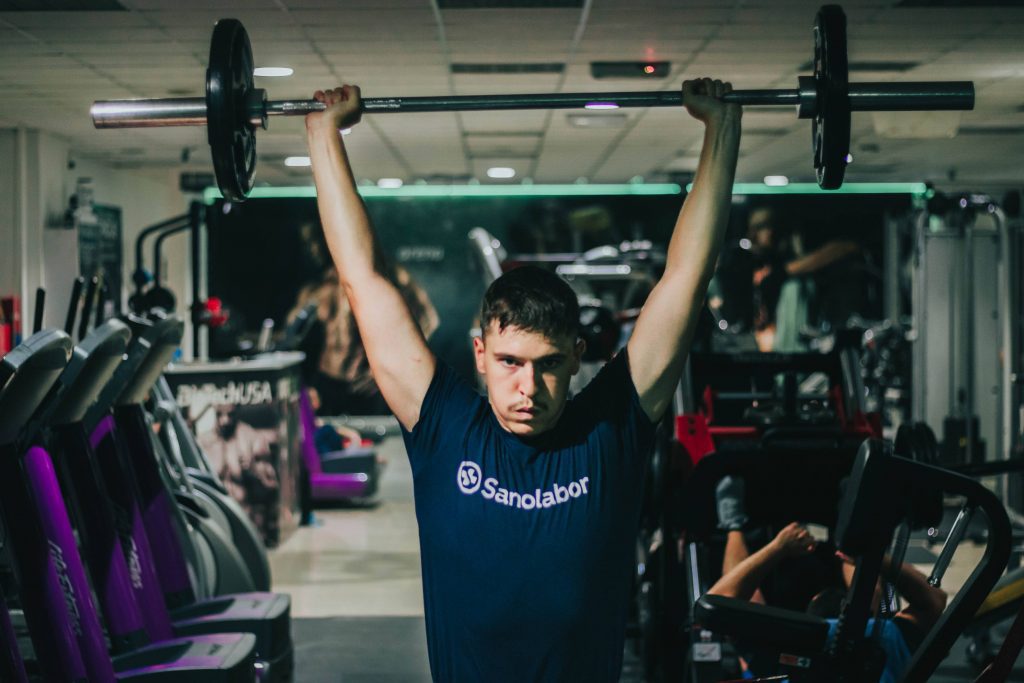
Research Limitations
*Studies have some limitations, important to evaluate the validity of their results. Here’s a highlight of some and NOT ALL studies (and limitation), shown in this article, for context.
- Aged data or data older than 10 years *2004, 2005, 2009.
- Weak control of external factors *nutritional intake, complementary training, sleep quality.
- Further research needed to clarify the acute effects of weightlifting on hormones, along with other factors like overtraining, nutrition, circadian rhythm and hormone responses.
4 Key Principles of Effective Training for Size
1. Progressive Overload
For our muscles to grow in size and become stronger, we need to use them efficiently. This means producing force to push against external resistance. Progressive overload is the increase in demands placed on our muscles through training.
This increase can be in intensity, volume, or total load lifted. As we are training and become stronger, the muscles get used to the same stimulus and adapts. Training at the same level for years will be sufficient for maintenance, but not progress and muscle growth. This is where progressive overload comes in handy, as we can increase both strength and muscle size. (8)
2. Keeping a Variety
The best way to break out of a plateau is to add variety to your training. Many people, especially advanced lifters who train with the same routine, similar load, similar volume, and same exercises have gotten to a place where progress seems impossible.
This plateau is best broken by adding different exercises, shocking the muscle, switching up training protocols, and so on. By variety, you can still train the same volume, similar load, and protocol, but switch the exercises. Still target the same muscle, but instead of doing the regular bench, you add a combination of incline and decline bench press (to target the chest from another angle).
3. Muscle Dominant Focus
The muscle-dominant focus is by far the most important characteristic of hypertrophy training. This means we put the muscle first, the weight second. In a practical example, we actively focus on engaging the muscle instead of trying to lift more weight.
This is done by doing a slower-paced contraction, keeping a tempo of around 1-2 or 2-3 sec. concentric to eccentric contraction. Bodybuilders train slower and feel the weight, engage the muscle. Powerlifters are different, mainly focused on moving the weight from A to B, strong and fast. This won’t cause inflammation and tear the muscle so much.
4. Compound vs. Isolation
When training to grow in muscle size, the ratio of compound to Isolation should be around 50/50. While lifting for strength or power will include mostly compound or full-body exercises, working for muscle growth requires tearing the muscle down more, and the most efficient way for this is isolation.
But because compound weightlifting offers so many benefits, increases overall testosterone, speeds up metabolism and fat loss, increases full-body strength, and many more, it is the best way to start the practice. So, starting each workout with compound exercises would be great, until the muscles become tired, after which you can switch to isolation.
Conclusion
- Hypertrophy is the mechanism by which the muscle grows.
- Optimal training for size includes high volume and frequency, 6 workouts per week, 6-12 exercises per workout, 3-5 sets per exercise, 8-12 reps with 65-85% RM Load, and short rest periods of 60-90 seconds between sets.
- Although there are different techniques, Split Muscle Training is known to be the best by far.
- Training for size requires slower and more controlled reps, with 1 to 2 or 2 to 3 seconds per concentric to eccentric contraction.
- For muscle growth to occur, we need enough mechanical tension, muscle damage, metabolic stress, and positive protein synthesis.
- Variety, progressive overload, and muscle dominant focus are some of the key principles of effective training for size.
Frequently Asked Questions
How to train to increase muscle size?
To increase muscle size we need to focus on hypertrophy training method. This includes high volume, moderate loads and short rest periods. More specifically, you should aim at metrics such as: 5-6 workouts per week, 6-12 exercises per workout, around 3-5 sets per exercise with 8-12 reps of 65-85% RM Load. Rest periods shouldn’t exceed 1.5 minutes in between. Optimal recovery, sleep and regeneration alongside with high protein diet are crucial too.
How long does it take to see muscle growth?
Although the effects of weightlifting will acutely result in visible muscle increase, this isn’t really building muscle. At the end of each weightlifting session it is normal that we look more muscular than at its start. This is caused by increased circulation and water-pulling effect of creatine. In reality, we need around 3 months to significantly build muscle. Shorter periods of training will mainly aid in water-retention and won’t build real muscle, resulting in easier visible muscle loss after quitting weightlifting training.
How much protein per day for muscle growth?
The ideal protein quantity to build muscle is 1.2-1.7 grams of protein per kg of bodyweight daily. If you measure in pounds, this will amount for 0.5-0.8 grams of protein per pound of bodyweight.
Should I train to failure for hypertrophy?
Training to failure is an effective method for hypertrophy. The basic idea relies on the fact that muscle contractions tear up smaller muscle fibers and cause microtears, which is the main stimulus for regeneration. Training to failure will ensure this happens, and also increase lactic acid build-up. This causes inflammation, after which with sufficient protein, rest and regeneration the body is building more and stronger muscle fibers.
What is the most effective way to build muscle?
There are three core principles to building muscle. First is training, and the most practical one is hypertrophy method, which aims for high volume of 4-6 workouts per week, 6-12 exercises per workout, 3-5 sets of 8-12 reps with a load of 65-85% RM. Slow, eccentric and controlled lifts, minimal rest of 45-60 seconds in between. The other two factors are high-protein diet (especially Leucine, BCAA & Glutamine) and optimal sleep/regeneration.

